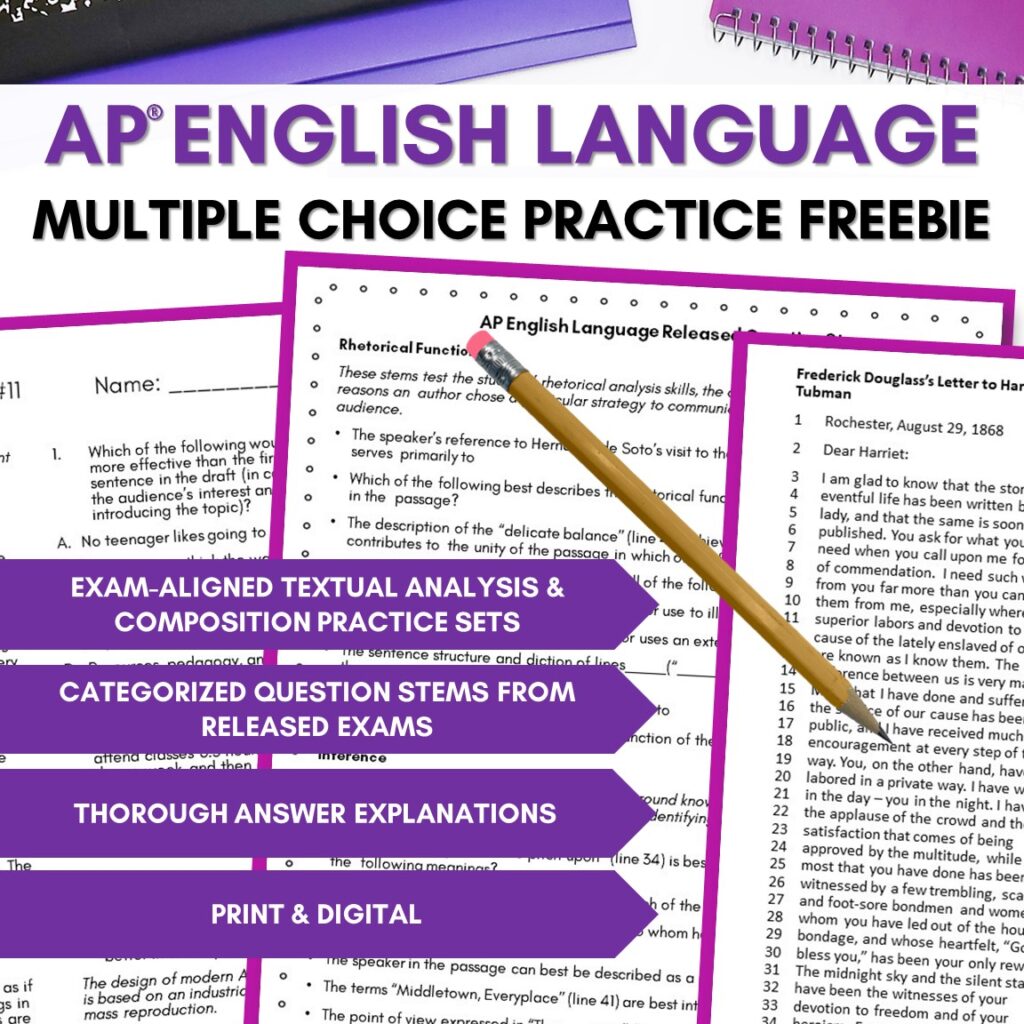I’m so thankful that some students will have the opportunity to take the paper-pencil exam May 12. It just feels . . . normal.
It also feels normal to write an old-fashioned blog post about ways to tackle an analog anything. Thank you, trees, for giving your lives for this paper-pencil AP English Language & Composition exam. We will gladly sit in rows, facing front, many feet apart, in your honor.
Here are a few practical tips for giving students a 1% edge on the paper-pencil exam:
1. Use a GOOD black pen.
Tell students to use a pen that feels comfortable in their hands. A cheap plastic Bic that gobs up is not the way to go. If your students have the means, tell them to go to an office supply store and splurge on a nice one with an ergonomic grip. They will be writing for two solid hours, so preventing hand fatigue may make that last essay less painful.
2. Use the RIGHT #2 pencil.
I don’t know about you, but I detest rubbery pencils. Two or three super-sharp Ticonderogas will do the trick.

3. Be DELIBERATE about the essay order.
On the paper-pencil exam, students get to choose the order in which they respond to the three free response prompts. They will indicate in the exam book which one they’re on. Opinions vary on this one, but here’s my take: Students should use the 15 minutes of reading time at the beginning of the free response section to skim and make some decisions. While they still have a modicum of brain remaining, respond to what they consider the most challenging prompt. Save the “easiest” for last when they are running out of steam.
There is an argument to be made that students should do first the one they think they can knock out of the park. They start confident with the one they know they can write well and save for last the one they think will trip them up.
4. LOAN themselves time.
Students can think of the free response section like three bank accounts, each of which contains 40 minutes. If they do the first one in 35 minutes, they can then donate that five minutes to another prompt. If they do the second one in 35 minutes, they have given themselves ten extra minutes (50 total) on the third prompt. That alone might be a good reason to do the most difficult last.
5. Eat PROTEIN for breakfast.
No pancakes or cereal! Students need long-burning fuel to sustain them through a three-hour exam. Carbs will give them a quick burst and a crash, so meat and eggs are in order. Vegan students can scramble up a nice block of tofu, but they should stay away from orange juice, soda, bagels, and other simple carbs.
6. Get THREE good nights of sleep.
We all know that the teenage brain is elsewhere at 8:00 am, so May 12 is going to be tough for some of our babes. There need to be no late nights in the days leading up to the exam; they need a minimum of eight hours of sleep May 9, 10, and 11.
7. Avoid DRAMA the morning of the exam.
Blinders on, people. Encourage students to stay off social media and steer clear of family members with whom they often argue. We’re going for Zen.
8. Go for CONFIDENT or COMFORTABLE.
When choosing clothes on test day, students might consider either flannel jammies that make them feel comfy or a business casual outfit in which they feel confident and professional.
9. Don’t forget the DIGITAL clock.
There will be students in the room who cannot read an analog clock. Be sure to accommodate for that with a large digital clock.
10. Think WORST case scenario.
For students who struggle with anxiety, I walk them through a worst-case scenario. It goes something like this:
Me: What’s the absolute worst thing that could happen?
Student: I could fail.
Me: Well, you can’t fail an AP exam, so what’s the worst thing that could happen?
Student: I could run out of time.
Me: Do you have some strategies in place to help that not happen?
Student: Yes. I’m watching the clock on EXCEPT questions on the multiple choice, I’m going to do Question 3 first so I can loan myself some time, and I’m only going to annotate for tone shifts and major strategies on rhetorical analysis.”
Me: Ok, that’s a great plan, so that scenario isn’t likely to play out. Now what’s the worst thing that could happen?
Student: I could oversleep.
Me: Yeah, it’s an early exam. What’s your plan?
Student: I already have an alarm set on my phone. I also have an alarm clock across the room so that I have to get out of the bed to turn it off.
Me: Perfect. So give me another scenario.
Student: My car breaks down on the way to the test.
Me: And you get there too late? Then you take the make-up exam. Easy peasy.
And so on. Eventually, you give the student an outlandish worst case like this:
You get into a tremendous fight with your parents the night before, and they take away your car keys and tell you that you have to walk to the exam. You set out at 6:00 am, and it’s pouring down rain. A tractor trailer comes by and splashes you. Drenched, you get to the test and realized that you’re at the wrong site. You have 30 minutes to get to the right building. You get there, and the proctor has just closed the door and won’t let you in.
That’s probably not going to happen. You’re going to be fine.
Teachers, want to give your students a leg up? Grab this multiple choice freebie to help them understand question design.


